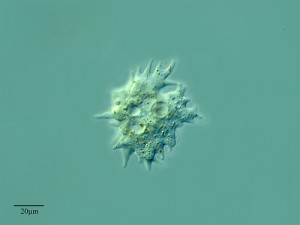Autopoiesis & Network Science no comments
This weeks’ complexity lecture on network science covered much of the content from the Foundations lectures, and from the book Linked. This is something I find particularly interesting, and of relevance to collective problem solving, primarily in terms of characterising the structure of the networks people can form. Interestingly, human social networks are very different from most other networks because they are characterized by a positive rather than a negative node degree correlation.
Last week, the complexity lecture was on Autopoiesis – an attempt to create a non-circular definition of life. It defines it as a self-sustaining system with it’s own semi-permeable boundary to the outside world, containing various processes that both sustain themselves and maintain the membrane. This leads to the extraction of nourishment from the external environment and excretion of waste. Whilst this was designed primarily to clarify the distinction between life and non-life at the microscopic level, the analogy to human groups (such as, for instance, the Catholic Church) may be of some interest to my topic in terms of answering – what is it that makes a group (such as one formed online to solve a problem) sustainable?
